Table of Contents
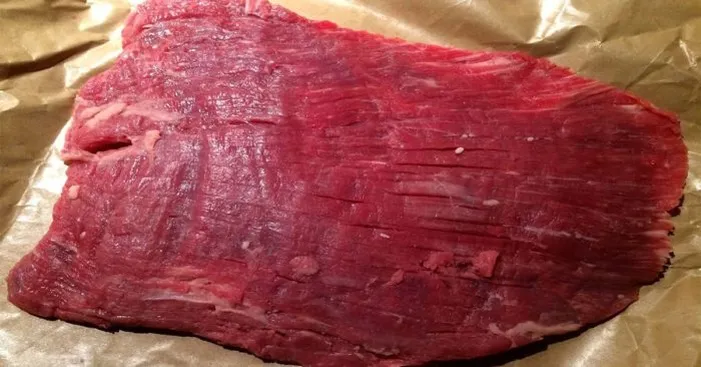
Moose meat is one of the most appreciated cuts for those who love that strong aromatic red meat flavor.
However, this meat is not only delicious but also full of nutrients and come with several benefits for our health.
In this article, we gathered all the information you need to learn about moose meat, the nutritional values and health benefits, the possible side effects, alongside tips on how to buy + cook + store it.
History of moose meat consumption

Ever since the stone Age and before domesticating some animals, humans hunted moose and other wild animals for their meat.
Once they got familiar with certain animals, they started breeding deer and moose mainly to use them for milk and meat.
Several centuries later, people of the Northern hemisphere learned how to domesticate moose.
Across Sweden, Russia, Finland, Canada, and Alaska, moose were used for their carrying power and their meat supply.
It may seem very bizarre to some people, but believe it or not, moose meat consumption is very traditional in some parts of the world.
Not only does it provide large quantities of meat, but the meat of a moose is very lean and rich in beneficial nutrients.
Nutritional values and health benefits of moose meat:

Nutritional values:
The best thing about game meat like rabbit, bison, and moose meat is the fact that they are very lean and low in calories.
In fact, these meats contain no carbohydrates while offering high protein content that fuels the body with the necessary energy.
Also, moose meat contains almost no fats which can be a great substitute for lamb or beef for people on a journey to lose weight.
This meat has a very dark red color due to its composition which is primarily made of muscles and nerves.
Moose feed on natural grass and leaves which makes its meat very similar to deer and lamb meat, very fragrant!
However, it is recommended to consume the meat of young moose that is around 3 years of age.
At that age, the animal is not old therefore the meat is not yet hard and rough but it already accumulated enough nutrients.
This data counts for a serving of 3.5oz (100g) of cooked moose meat:

- Calories: 102
- Protein: 22g
- Cholesterol: 59mg
- Fat: 0.7g
- C vitamin: 8%
- B1 vitamin: 5%
- B2 vitamin: 21%
- B3 vitamin: 31%
- Copper: 8%
- Iron: 18%
- Magnesium: 5%
- Phosphorus: 13%
- Potassium: 7%
- Zinc: 25%
- Selenium: 17%
Health benefits:

Moose meat is very organic as the animals mostly live in the wild forest and are not subjected to hormone injection and junk food.
With that being said, we can already guess how beneficial it is to consume game meat in comparison with nowadays processed products.
This meat offers many micro-nutrients essential for several body functions and it has almost no fat at all!
Here are some benefits you can get from this delicious meat:
- Moose is low in fat which makes it very beneficial especially for people dealing with obesity as it helps lose weight.
- It is fully stacked with B vitamins essential for a well-balanced metabolism.
- Consuming moose would help reduce stress and the risks of depression.
- This meat is a great source of naturally complete protein which can boost energy levels, promotes muscle growth, and reduces fatigue.
- It also contains several compounds that help strengthen the walls of blood vessels and promotes a healthy cardiovascular system.
- People who consume moose meat once a week are less vulnerable to plaque formation within the arteries.
- With a good amount of vitamin E and other antioxidants, moose meat helps fight free radicals, slows down aging, and prevents wrinkles.
- It is a very good source of Iron which promotes hemoglobin production and reduces the risks of anemia.
- Some compounds in this meat are able to regulate blood sugar levels.
- It is a natural source of phosphorus, calcium, and other substances that maintains bone density and reduce the risk of fractures.
- Moose meat is a good natural remedy for people suffering from osteoporosis and other bone diseases.
- This meat offers natural components able to reduce the risk of infertility and improve the quality of sperm for men.
- Minerals and vitamins in moose promote fast recovery from injuries and surgeries.
- Thanks to some substances in this meat, consuming it will improve hair quality and promote its growth.
Other benefits of moose:
- Helps with the digestion process.
- Increases brain activity.
- Helps cope with stress.
- Boosts the metabolism.
- Strengthens the bones.
- Reduces the levels of bad cholesterol.
- Helps clean the blood.
- Promotes hair growth.
- Reduces the symptoms of menopause.
Precautions before you consume moose meat:

Even though moose meat is full of nutrients it can still cause some side effects.
It is an animal that lives in the wild and that makes it a possible carrier of heavy metals and parasites.
For instance, moose meat may contain a parasite called cysticercosis which inhibits muscle fibers and that makes it very difficult to find.
Because of this, it is very crucial to freeze moose meat as these parasites don’t live in a cold environment.
You should also make sure that you wash this meat properly once you thaw it and this will provide a second line of defense against parasitic dangers.
In addition, some people may be experiencing some allergic reactions once they consume moose meat.
Also, pregnant women must avoid this meat as the possible existence of heavy metals could harm their weak immune system or the fetus.
Women who are breastfeeding are also better off without any kind of game meat as they present a risk of infection.
This is because such types of meat come from wild animals which have not been vaccinated and can contain some parasites like salmonella, Toxoplasma, Helminth…
Here are the people that should avoid consuming moose meat:
- Those allergic to red meat.
- People who suffer from gout or arthritis.
- Urinary lithiasis (kidney stones or urinary tract stones).
- Pregnant and breastfeeding women.
Consuming moose meat:
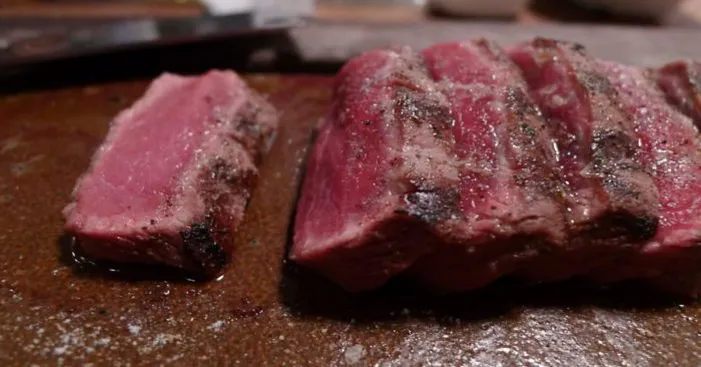
One general rule about game including deer meat or goose meat is that you shouldn’t over-salt them as they already contain enough sodium.
However, it is recommended to add onions and garlic to empower the natural taste of this yummy meat.
You can also marinate moose meat in herbs and berries to give it some more fragrance before you barbecue it.
Cranberry juice is by far the best ingredient to combine with moose meat as it enhances its flavor and tenderizes it.
For some lucky people in Sweden, Alaska, and Canada… it is possible to find different moose meat parts like the liver, the tongue, the fats, and the kidneys.
Moose’s liver is mostly used to make pies and the kidneys have a sweet taste and some people would even eat them raw.
The fats of moose can be used for frying as it has a very pleasant odor that can be the secret extra aroma in your dish.
Moose meat in general is a delicacy on its own, let alone moose tongue which has a meaty and very delicious taste.
Moose meat stew:
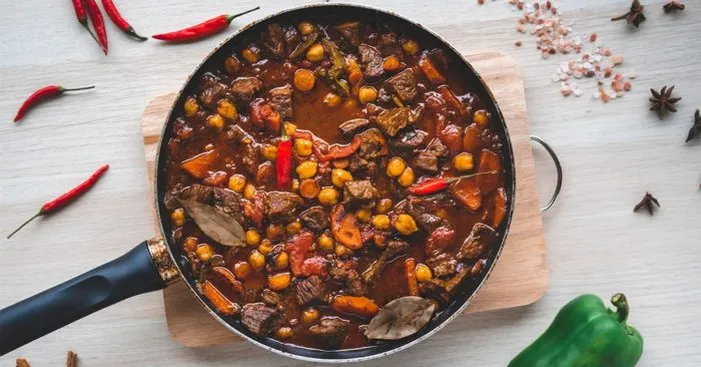
Ingredients:
- 3 lbs of meat moose.
- 2 cups of cremini mushrooms (170 g).
- 5 shallots.
- 3 carrots.
- ½ cup of chickpeas.
- 1 onion.
- 3 tbsp of olive oil.
- 2 rosemary sprigs.
- 3 celery stalks.
- ½ cup of water.
- 1 chicken cube.
- 2 tbsps of butter.
- 1 tbsp of tomato paste.
- Salt & pepper (2 tsp each).
Preparations:
- Start by peeling the onions, mushrooms, and carrots then slice them very finely.
- Peel the shallots and celery then chop them thinly.
- Wash the meat in cold water, then let it dry on a piece of cloth then cut it into large cubes.
- Heat the olive oil in a frying pan then start frying the meat cubes for about 3 minutes on each side.
- Add the butter to ensure the tenderness of the meat and then add chickpeas, chopped onion, and let the pan cook until the onion becomes soft and the meat is golden.
- Add shallots, carrots, mushrooms, chicken cubes, celery, and rosemary to the frying pan and cook for 1 minute while stirring.
- Now add tomato paste, water, salt, and pepper then turn down the heat to 140°F (60°C) and let the pan cook for 2 hours.
- Once the stew is thick and the meat is properly cooked, serve it with a bit of boiled rice on the side and enjoy it!
Moose meat soup:
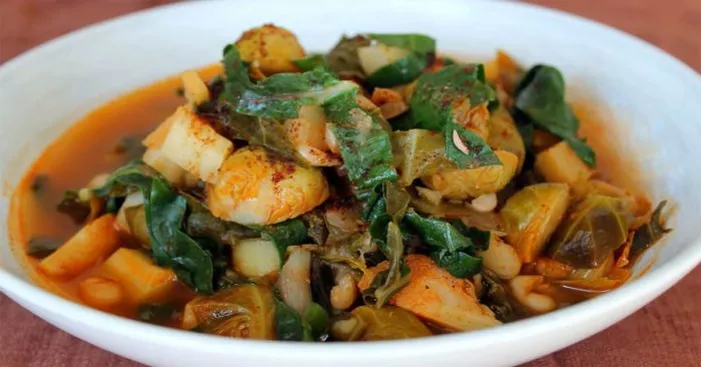
Ingredients:
- 2 lbs of moose meat (with or without bones).
- 2 onions.
- 3 potatoes.
- 1 pepper.
- 2 carrots.
- 1 tomato.
- 2 tbsp of olive oil.
- 6 cups of water.
- 4 bay leaves.
- Salt and pepper (2 tsp each).
Preparation:
- Wash the meat in cold water then let it dry on a piece of cloth.
- Once it’s dry it becomes easy to cut so go ahead and cut the meat into small pieces to facilitate its cooking.
- Chop the onion into small cubes then grate the carrots.
- Heat olive oil in a pot then sautée onion and carrots until they become soft.
- Cut the tomato and pepper into small dices then add them to the cooking pot and let them cook for 6 minutes.
- Now cut the potatoes into large cubes.
- Add the pieces of meat and the potato cubes to the pot and cook them until the potatoes become softer.
- Go ahead and pour the water into the pot and add bay leaves, salt, and pepper.
- Cover the pot and turn down the heat to 140°F (60°C) then let it cook for 90 minutes.
- Serve the soup with pieces of bread and enjoy it!
Buying moose meat:
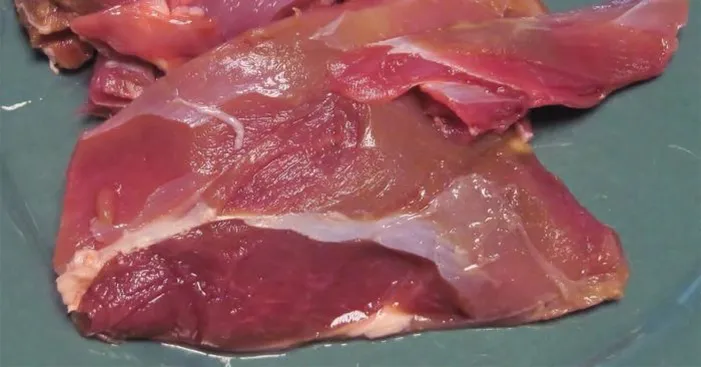
Since most moose meat comes from hunted animals, it may be exposed to bad storage practices.
Therefore, to ensure you buy good quality moose meat you need to know a few tips:
- Large muscle fibers indicate that the animal is old which means the meat is hard and very difficult to tenderize.
- The smell of this meat shouldn’t be unpleasant nor has a taste of urine or mud as those are signs of bad handling and storage conditions.
- You can also apply gentle pressure using your finger and if the meat is fresh it should instantly go back to its initial state.
- You should also know that the brighter the color of moose meat the younger the animal was.
The color of a 3 year old moose meat must look dark red with almost no fat and sometimes it has a bluish tint and that’s okay.
In fact, when the animal passes the safety measures of the USDA they put a green or blue stamp directly on the carcass.
The stamp is made from edible ink and it should cause no harm to the consumer as it indicates that the meat passed inspection.
Storing moose meat:

Unlike other red meat, moose meat is very fragile and we should pay attention when we store it.
To store this meat, here’s what to do:
- Place the fresh moose on a ceramic dish and cover it with plastic foil so no air or humidity can go in.
- Freeze it for 7 days to make sure all the parasites inside muscle tissues are exterminated.
- Thaw this meat in the fridge for a maximum of 24 hours.
- You should never freeze an already thawed moose meat as it will most likely spoil.
To conclude, whether you bought frozen or fresh moose meat, once you thaw it you need to consume it within a day.
